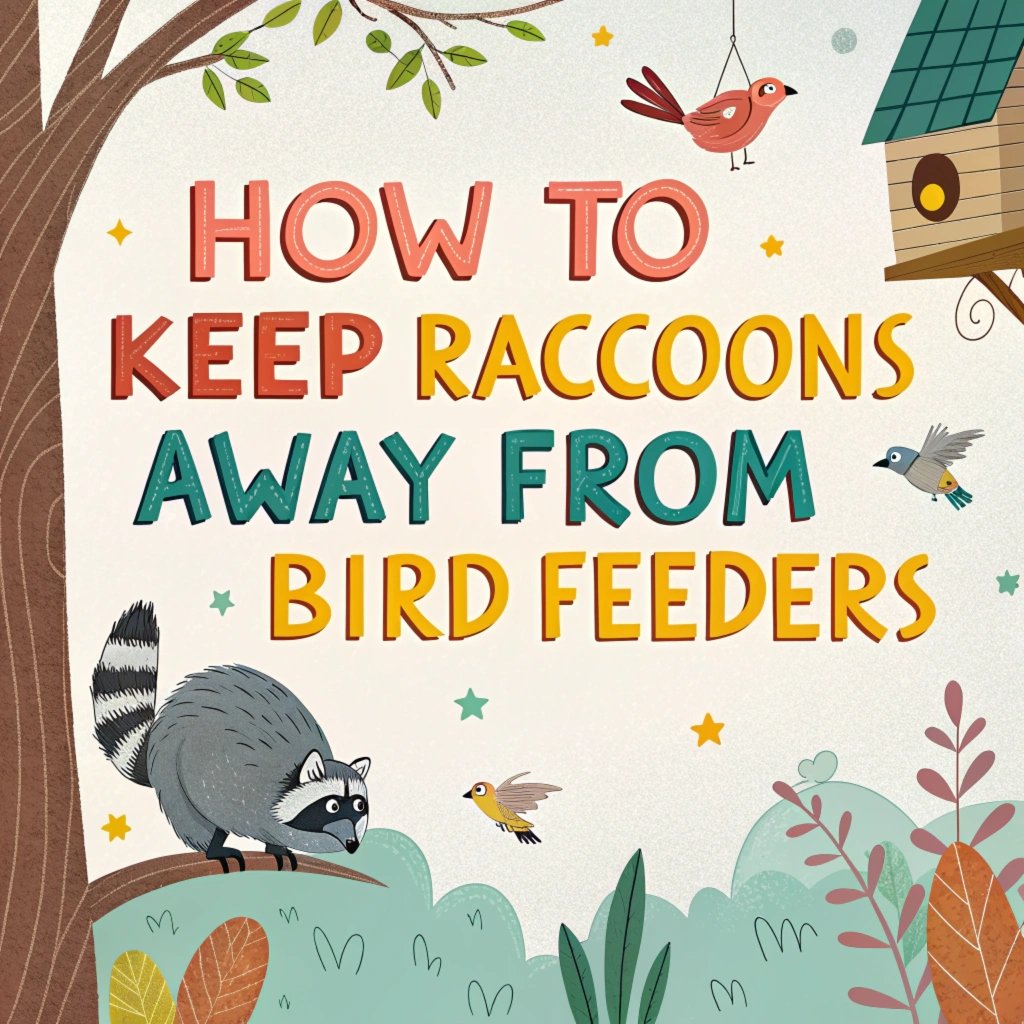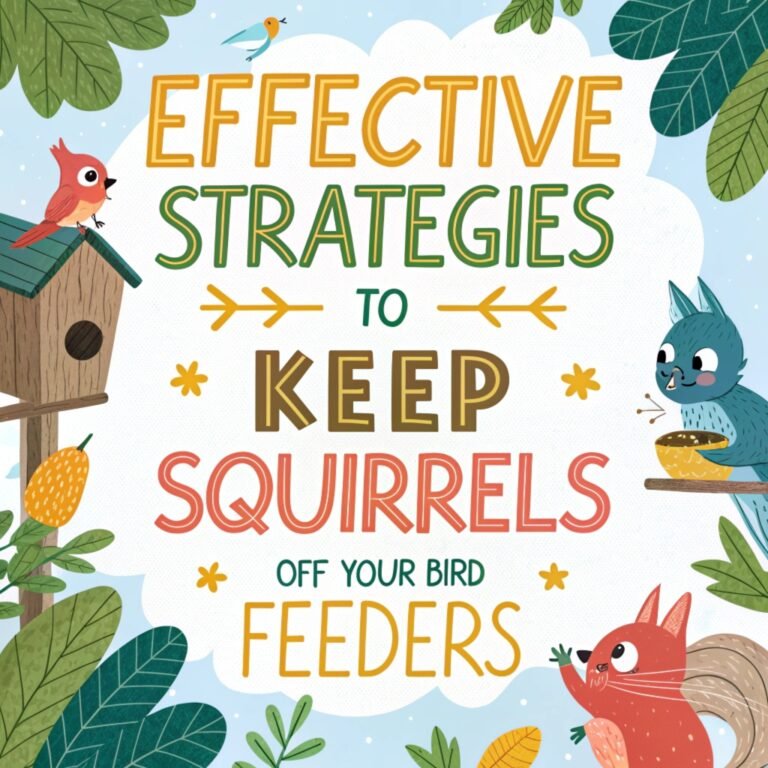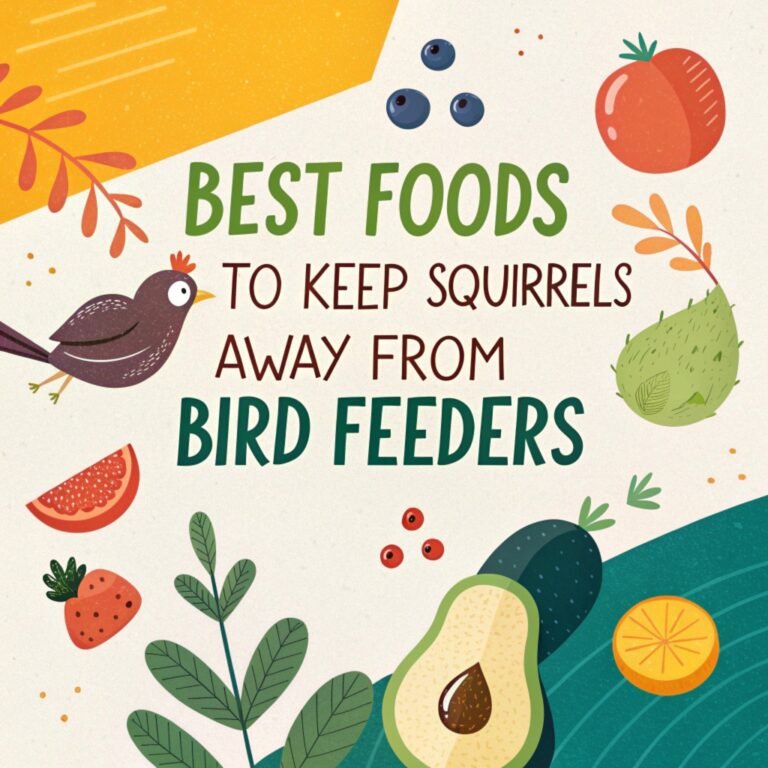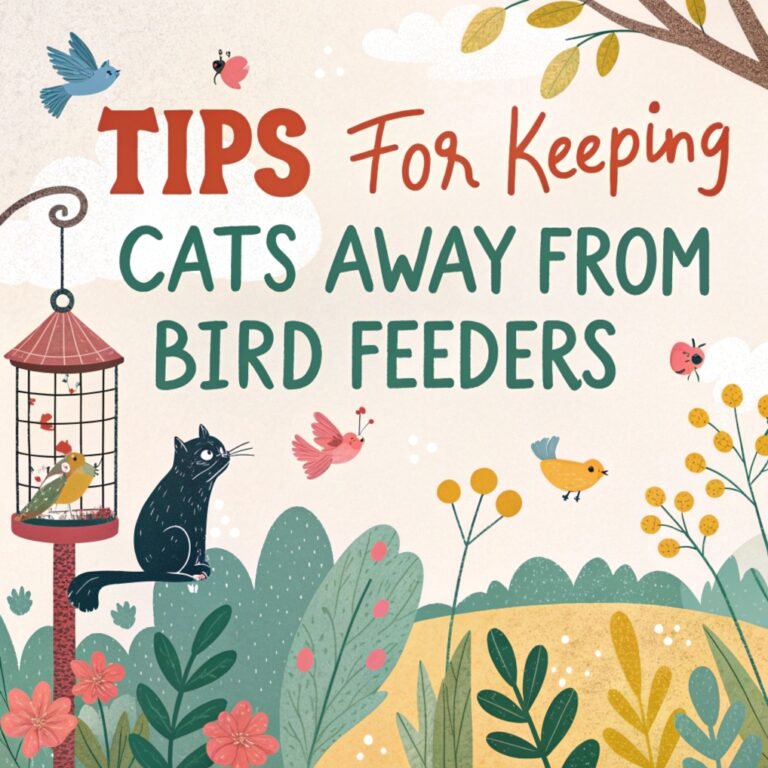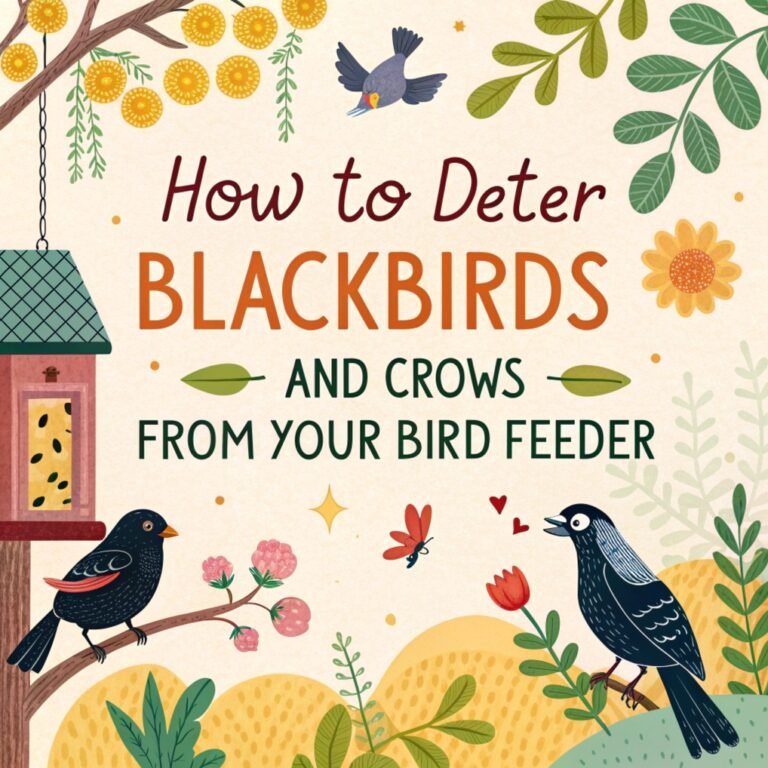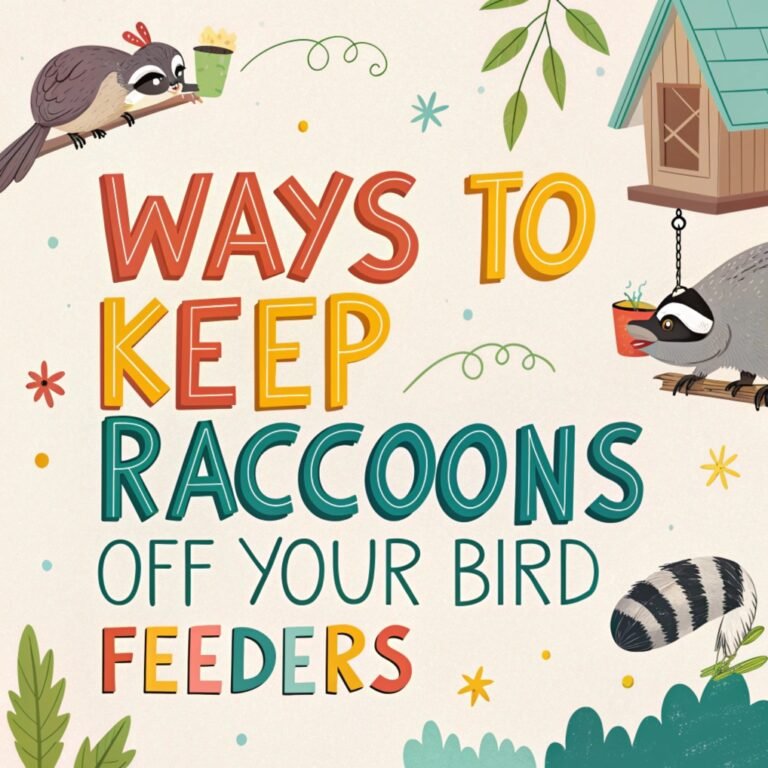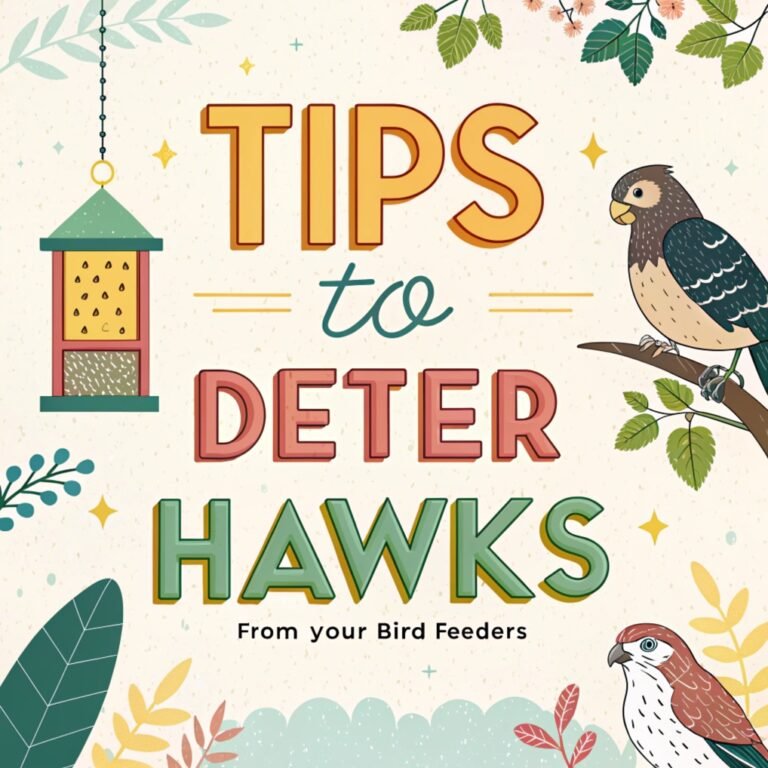How To Keep Raccoons Away from Bird Feeders: Protect Your Feathered Friends’ Food Supply
Attracting birds to your yard with feeders can be a delightful experience, but it often comes with an unwelcome side effect: raccoons.
These clever and determined creatures can quickly become a nuisance, raiding bird feeders and causing damage to your property.
In this comprehensive guide, we’ll explore various strategies to keep raccoons away from your bird feeders, ensuring that your feathered friends can enjoy their meals in peace.
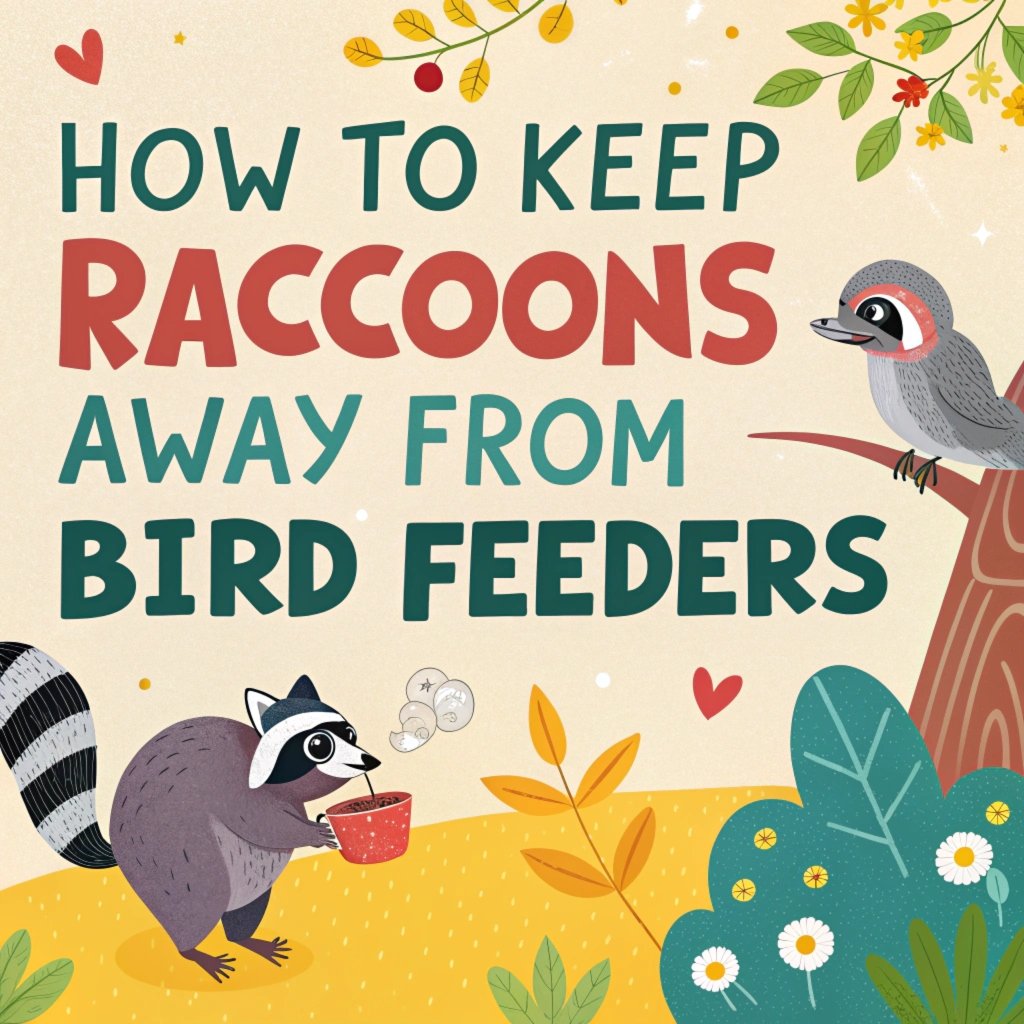
Key Takeaways:
- Choose the right feeder: Opt for metal feeders with weight-activated perches or caged designs.
- Strategic placement: Position feeders high off the ground and away from climbing surfaces.
- Use baffles: Install large baffles on feeder poles to prevent raccoons from climbing.
- Clean up spills: Regularly sweep up fallen seeds to avoid attracting raccoons.
- Nighttime precautions: Consider bringing feeders indoors at night when raccoons are most active.
- Pepper deterrents: Use cayenne or black pepper to make seeds unappealing to raccoons.
- Motion-activated devices: Install lights or sprinklers triggered by movement to scare away nocturnal visitors.
- Proper storage: Keep bird seed in secure containers and avoid storing pet food outdoors.
- Wire suspension: Hang feeders on wires stretched between trees or structures.
- Thin poles: Use feeder poles less than half an inch in diameter to prevent climbing.
Understanding Raccoon Behavior
To effectively deter raccoons from your bird feeders, it’s crucial to understand their behavior. Raccoons are intelligent, adaptable, and primarily nocturnal animals.
Their keen sense of smell and dexterous paws make them excellent foragers, capable of accessing food sources that might seem secure to other animals.
Raccoons are omnivores, meaning they eat both plant and animal matter. This diverse diet makes bird seed an attractive food source for them.
Their problem-solving abilities and physical agility allow them to overcome many obstacles, including climbing poles and manipulating simple locks or latches.
By recognizing these traits, we can develop more effective strategies to keep raccoons away from our bird feeders.
It’s important to remember that while raccoons can be a nuisance, they play a vital role in their ecosystems and should be deterred humanely.
Selecting Raccoon-Resistant Bird Feeders
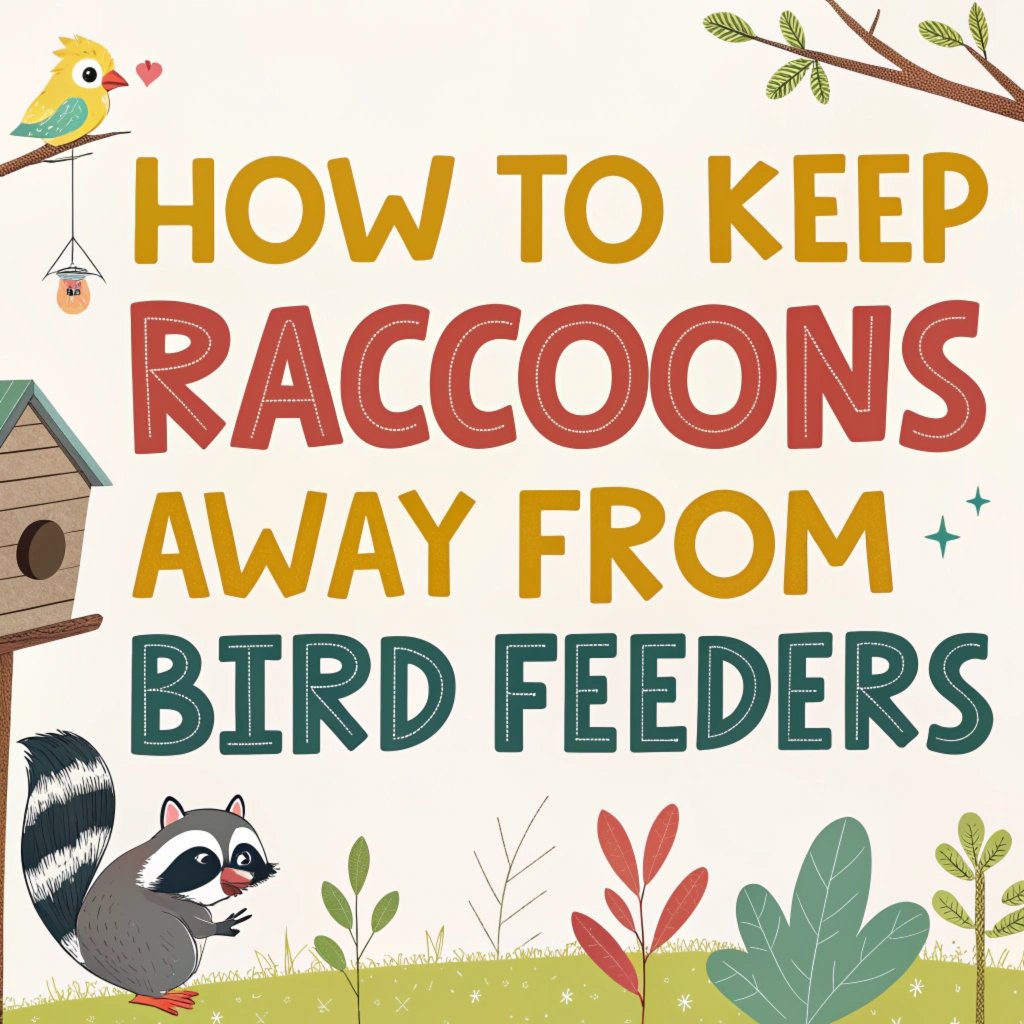
Choosing the right bird feeder is your first line of defense against raccoon raids. Opt for feeders specifically designed to be raccoon-resistant. These feeders often feature:
- Weight-activated perches: These close when a heavy animal tries to access them but remain open for lighter birds.
- Metal construction: Raccoons can’t easily chew through metal, making it an ideal material for feeder components.
- Caged designs: These allow small birds to access the food while keeping larger animals out.
Look for feeders with metal caps and bases, as these are more difficult for raccoons to manipulate. Some feeders come with built-in raccoon baffles, which are cone-shaped devices that prevent climbing.
When selecting a feeder, consider the types of birds you want to attract and choose a design that accommodates their feeding habits while still providing protection against raccoons.
Remember that no feeder is entirely raccoon-proof, but these features can significantly reduce the likelihood of successful raids.
Strategic Feeder Placement
The location of your bird feeder plays a crucial role in deterring raccoons. These clever creatures are excellent climbers and can jump impressive distances, so careful placement is essential. Here are some key strategies for positioning your feeders:
- Height matters: Mount feeders at least 5-6 feet off the ground, making it more challenging for raccoons to reach.
- Distance from structures: Place feeders at least 10 feet away from trees, fences, decks, or any other structures that raccoons could use as launching points.
- Open spaces: Position feeders in open areas where raccoons feel more exposed and vulnerable.
Consider using shepherd’s hooks or sturdy poles to hang your feeders. Ensure these supports are made of materials that raccoons can’t easily climb, such as smooth metal. Avoid placing feeders near low branches or roof edges that could provide easy access.
Remember to also consider the comfort of the birds you’re trying to attract. While deterring raccoons is important, ensure that your feeder placement still provides birds with a sense of safety and easy access to natural cover if needed.
Implementing Effective Baffle Systems
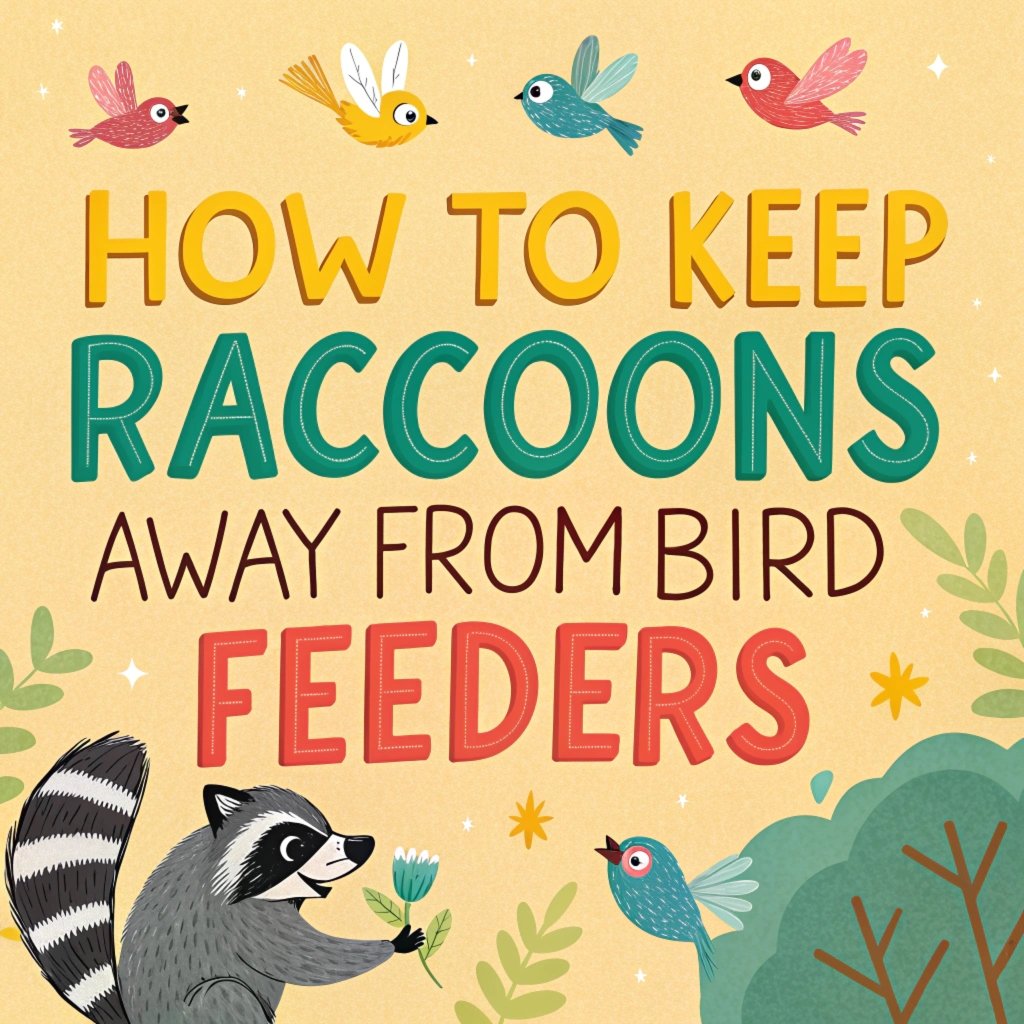
Baffles are one of the most effective tools for keeping raccoons away from bird feeders. These devices create a physical barrier that raccoons can’t navigate around or over. When installing baffles:
- Size matters: Use baffles much larger than those designed for squirrels. A diameter of at least 15-18 inches is recommended for raccoon deterrence.
- Height placement: Install pole baffles at least 4 feet off the ground to prevent raccoons from reaching around them.
- Material choice: Opt for smooth, durable materials like metal or hard plastic that raccoons can’t grip or chew through.
For pole-mounted feeders, consider wrapping a smooth sheet of metal around the pole up to 4 feet high, then placing a wide baffle above that. This dual-layer approach makes it extremely difficult for raccoons to climb.
For hanging feeders, use dome-shaped baffles suspended above the feeder. Ensure the baffle is wide enough to prevent raccoons from reaching around it.
Regularly inspect your baffles for any damage or wear, and replace them as needed to maintain their effectiveness.
Maintaining a Clean Feeding Area
Keeping your bird feeding area clean is crucial in deterring raccoons. These opportunistic feeders are attracted to any available food source, including spilled seed on the ground. To maintain a tidy feeding zone:
- Use seed catchers: Attach trays or platforms beneath your feeders to catch falling seeds.
- Regular cleaning: Sweep or rake up spilled seed daily, especially before nightfall when raccoons are most active.
- Proper disposal: Dispose of collected seed in sealed containers or compost bins away from your feeding area.
Consider using no-mess seed blends that contain seeds without hulls, reducing the amount of debris on the ground. Alternatively, opt for larger seeds like sunflower seeds, which are easier to clean up than smaller mixes.
Regularly clean and disinfect your feeders to prevent the spread of diseases among birds. This practice not only benefits the birds but also reduces odors that might attract raccoons and other unwanted wildlife.
Nighttime Feeder Management
Since raccoons are primarily nocturnal, managing your feeders at night can be an effective deterrent strategy. Consider the following approaches:
- Bring feeders indoors: If practical, bring your feeders inside each evening and put them back out in the morning.
- Use detachable feeders: Opt for feeders that can be easily removed from their poles or hooks for nightly storage.
- Timing bird feeding: Adjust your feeding schedule to ensure feeders are empty by nightfall, leaving nothing to attract raccoons.
If bringing feeders indoors isn’t feasible, consider using motion-activated lights or sprinklers near your feeding area. These can startle raccoons and other nocturnal visitors, discouraging them from approaching.
Remember that changing your feeding routine might temporarily disrupt bird visits. Be patient, as birds will adjust to the new schedule over time.
This method not only deters raccoons but can also help prevent other nighttime visitors from raiding your feeders.
Utilizing Pepper Deterrents
Raccoons have a strong sense of smell and a dislike for spicy foods, making pepper-based deterrents an effective and humane solution. Here’s how to use this method:
- Cayenne pepper: Mix cayenne pepper with your bird seed before filling feeders. Start with a small amount and increase as needed.
- Pepper spray: Create a homemade spray by boiling 4 cups of water with 1/3 cup of cayenne pepper. Let it cool, strain, and spray on feeders and surrounding areas.
- Black pepper: Sprinkle ground black pepper around the base of feeder poles and on nearby surfaces.
It’s important to note that birds cannot taste capsaicin, the compound that makes peppers spicy, so this method won’t harm or deter them. However, it will make the area unappealing to raccoons and other mammals.
Reapply pepper deterrents regularly, especially after rain or heavy dew. Be cautious when handling hot peppers, and avoid getting the mixture in your eyes or on your skin.
This natural deterrent can be a safe and effective way to keep raccoons at bay while still welcoming birds to your feeders.
Installing Motion-Activated Devices
Motion-activated devices can be highly effective in deterring raccoons from your bird feeders. These systems use sensors to detect movement and trigger a response that startles or discourages the intruders. Consider the following options:
- Motion-activated lights: Install bright LED lights that turn on when movement is detected. The sudden illumination can scare away nocturnal raccoons.
- Motion-activated sprinklers: These devices release a short burst of water when triggered, creating an unpleasant surprise for approaching raccoons.
- Ultrasonic repellents: These emit high-frequency sounds that are uncomfortable for raccoons but inaudible to humans and most birds.
When installing these devices, position them strategically to cover the area around your feeders. Ensure they won’t be triggered by the movement of birds or other small animals you want to attract.
Regularly check and maintain your motion-activated devices to ensure they’re functioning correctly. Rotate or reposition them periodically to prevent raccoons from becoming accustomed to their presence.
While these devices can be effective, they work best when used in combination with other deterrent methods.
Proper Food Storage Practices
Proper storage of bird seed and other potential raccoon attractants is crucial in keeping these clever creatures away from your property. Follow these guidelines:
- Secure containers: Store bird seed in airtight, metal or hard plastic containers with tight-fitting lids.
- Indoor storage: Keep seed containers inside a garage, shed, or other secure indoor location when possible.
- Clean storage areas: Regularly clean areas where you store bird seed to remove spills that might attract raccoons.
- Pet food management: Avoid storing pet food outdoors, and bring in pet dishes at night.
If you must store seed outdoors, use containers with locking mechanisms that raccoons can’t easily manipulate. Place these containers in areas that are less accessible to wildlife, such as on elevated platforms or inside secure enclosures.
Remember to also manage other potential food sources around your property. Keep garbage cans securely lidded, clean up fallen fruit from trees, and avoid leaving out any human food scraps that might attract raccoons.
Wire Suspension Techniques
Suspending bird feeders from wires can be an effective way to keep them out of raccoons’ reach. This method takes advantage of raccoons’ limited ability to balance on thin wires. Here’s how to implement this technique:
- Stretch wire between trees: Use a strong, thin wire or cable to create a line between two trees or other sturdy structures.
- Height and distance: Ensure the wire is at least 10 feet off the ground and 10 feet away from any jumping points.
- Multiple feeders: Hang several feeders along the wire, spacing them out to distribute bird activity.
- Smooth wire: Use a smooth wire that raccoons can’t easily grip or climb along.
To further enhance this method, consider adding in-line barriers on the wire. These can be smooth, rotating cylinders that prevent raccoons from shimmying along the wire to reach the feeders.
Regularly inspect the wire and its anchor points to ensure they remain secure and undamaged.
This suspension method not only deters raccoons but can also create an attractive and dynamic feeding area for a variety of bird species.
Thin Pole Mounting Strategies
Using thin poles to mount bird feeders can be an effective deterrent against raccoons. These agile creatures struggle to climb poles with a diameter less than half an inch. Here’s how to implement this strategy:
- Pole selection: Choose poles made of smooth metal with a diameter of 1/2 inch or less.
- Height: Mount feeders at least 5 feet high on these thin poles.
- Stability: Ensure the pole is securely anchored in the ground to withstand wind and animal activity.
- Smooth surface: Keep the pole clean and free of any protrusions or rough spots that raccoons might use for grip.
To enhance this method, consider adding a spinning mechanism at the top of the pole. This can be as simple as a smooth, freely rotating PVC pipe section that will spin if a raccoon attempts to climb it.
Remember to place these thin poles away from any structures or trees that raccoons could use to jump onto the feeder.
Regularly inspect the poles for any damage or wear that might compromise their effectiveness in deterring raccoons.
Natural Raccoon Deterrents
Incorporating natural deterrents into your yard can help keep raccoons away from your bird feeders while maintaining an eco-friendly environment. Consider these options:
- Plant repellent herbs: Grow herbs like mint, lavender, or rosemary near your feeding areas. Raccoons dislike their strong scents.
- Predator urine: Use commercially available predator urine (like coyote or fox) around your yard to create the illusion of danger for raccoons.
- Vinegar solution: Spray a mixture of equal parts water and white vinegar around feeding areas. The strong smell deters raccoons.
- Essential oils: Use cotton balls soaked in essential oils like peppermint or citrus near feeders. Refresh regularly as the scent fades.
Remember that natural deterrents may need frequent reapplication, especially after rain. While these methods are generally safe for birds, always research potential impacts on local wildlife before implementing them.
Combining natural deterrents with other raccoon-proofing strategies can create a multi-layered defense for your bird feeders, making your yard less appealing to these persistent creatures.
FAQs
How high should I hang my bird feeder to keep raccoons away?
Hang your bird feeder at least 5-6 feet off the ground and 10 feet away from any structures or trees that raccoons could use to jump from. This height makes it difficult for raccoons to reach while still being accessible to birds.
Are there any bird seeds that raccoons don’t like?
While raccoons are opportunistic eaters, they tend to be less attracted to safflower seeds and nyjer seeds. However, no seed is completely raccoon-proof, so it’s best to combine seed choice with other deterrent methods.
Can raccoons harm birds at feeders?
Raccoons are generally more interested in the food than the birds themselves. However, their presence can scare birds away and potentially spread diseases. It’s best to keep raccoons away from feeders to ensure a safe environment for birds.
How often should I clean my bird feeders to deter raccoons?
Clean your bird feeders at least once every two weeks, more often in wet weather. Regular cleaning not only deters raccoons by reducing odors but also helps prevent the spread of diseases among birds.
Is it safe to use pepper spray on bird feeders?
Yes, it’s safe to use pepper spray on bird feeders. Birds can’t taste capsaicin (the compound that makes peppers spicy), so it won’t harm them. However, it will deter raccoons and other mammals. Always use a natural, food-grade pepper spray for this purpose.

Hello, I’m Amelia White, the founder of birdsfanatic.com. As a lifelong bird enthusiast and spiritual seeker, I’ve always been fascinated by the mystical connections between birds and the human experience. On this site, I share my knowledge and insights into the symbolic meanings and spiritual significance of various bird species, exploring their roles in mythology, folklore, and cultural traditions. Join me on this journey into the world of birds, where we’ll discover the hidden wisdom and guidance that these magnificent creatures have to offer.

